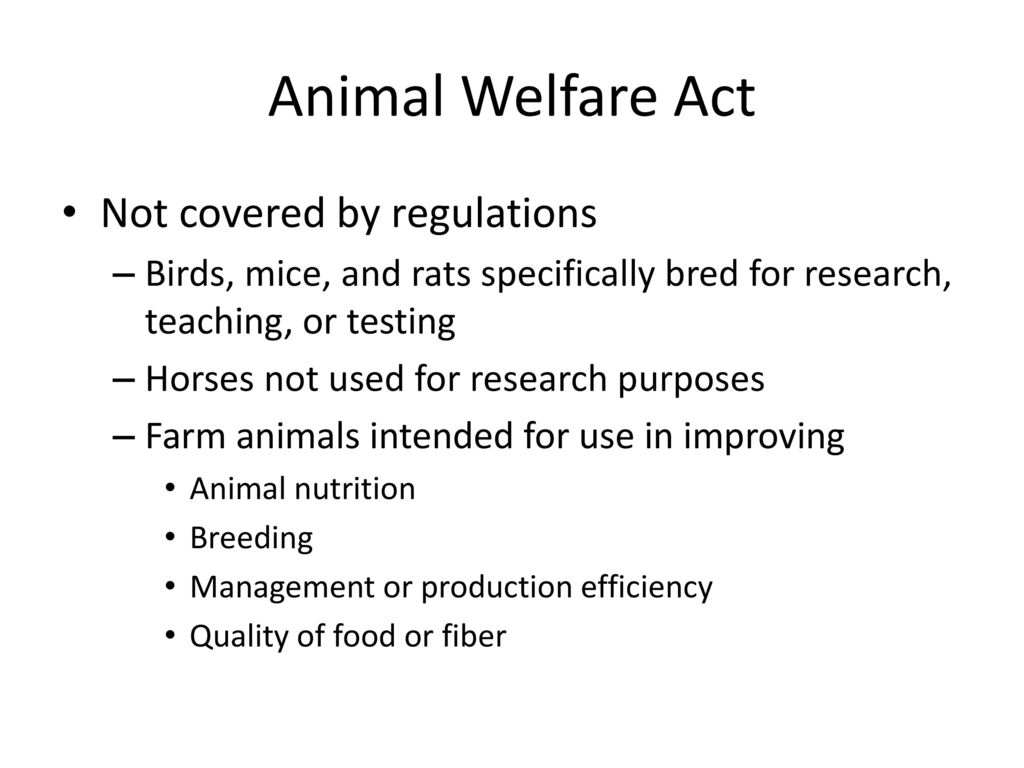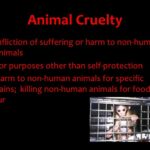In the intricate tapestry of animal welfare legislation, the Animal Welfare Act (AWA) stands as a safeguard for numerous species, a protective cloak draping over a variety of animals. However, even as this legislation marches forward, there remain animals that slip through the cracks, left exposed and vulnerable, much like unguarded tapestries unraveling at the seams. With an understanding of the omissions in the AWA, one can begin to comprehend the entrenched complexities of animal rights and the ethical dilemmas they pose.
To grasp what animals fall outside the purview of the AWA, it is crucial to first comprehend the law’s intended scope. Enacted in 1966, the AWA primarily seeks to assure humane treatment for certain species, specifically focusing on animals used in research, exhibition, transport, and by dealers. Yet, this well-meaning legislation casts a shadow that obscures various other creatures from its protective light. Thus begins the exploration of the animals not graced by the AWA’s provisions.
The most conspicuous group excluded from the AWA’s embrace is the very embodiment of companionship for countless households: the beloved pet. Cats and dogs, the quintessential symbols of human-animal interaction, although cherished by millions, are not covered under the AWA when they exist within their own homes. The law excludes pets, placing them outside the regulatory mechanisms that would ensure their welfare, their exuberant spirits left to the whims of their human guardians. Here lies a paradox—a loving home can also be a site of neglect or abuse.
Interestingly, the AWA also circumvents exotic animals. The term “exotic,” in this context, serves as a kaleidoscope revealing a plethora of creatures, including reptiles, birds, and unique mammals that are not considered domestic. These fascinating species often fall victim to the pet trade, facing unimaginable conditions in captivity. They exist within a murky boundary where the law fails to intercede, left vulnerable to exploitation for their aesthetics rather than their intrinsic value as living beings. Without the regulatory oversight afforded by the AWA, exotic animals frequently encounter environments devoid of adequate care, leading to distress, malnutrition, and premature death. In many respects, they are the silent sentinels of animal cruelty, their voiceless plight echoing in the shadows of ignorance.
Moreover, agricultural creatures represent another significant gap within the AWA. While the Act does regulate certain aspects concerning the treatment of animals raised for research, it jinxs at the mention of most farm animals. Cattle, pigs, and chickens, the very linchpins of our agricultural systems, are granted mere tokens of protection under the AWA. The exemption arises from the Federal Agriculture Improvement and Reform Act, which categorizes these animals narrowly within business operations, prioritizing production over welfare. As such, the legislation has provided a permissive breeding ground for practices such as intensive confinement and cruel slaughter methods, which bespeak an ethical quandary that ties deeply into societal attitudes toward food production.
Notably, the AWA’s exclusions also extend to wild animals, a category fraught with its own unique complications. Wild animals, whether they inhabit natural ecosystems or are held in captivity in thoughtless facilities, seldom encounter the benefits of the AWA. These creatures navigate a life fraught with peril—targeted for habitat destruction, poaching, and illegal trafficking. The law’s failure to encompass these animals leads to a poignant realization: the fragility of ecosystems is often tied to the absence of protective legislation. As stewards of the environment, the responsibility to safeguard such species rests not only on legislation but also on collective human ethos.
The ramifications of these exclusions extend beyond individual animals, weaving a larger narrative about society’s relationship with non-human beings. The Animal Welfare Act may represent a vital effort to establish a baseline of care and consideration, yet its shortcomings highlight the disparities in how society values different species. There is an undeniable irony that while some animals bask in the security of this legal framework, others are left adrift in a nebulous realm, their lives entangled in the mercurial nature of human choices.
Thus, the discourse surrounding the animals excluded by the Animal Welfare Act resonates far beyond a mere cataloging of species. It compels a critical examination of ethical hierarchies that prioritize certain lives over others, prompting a reevaluation of societal values regarding animal welfare. This examination must question not only the legal frameworks in place but also the cultural narratives that guide our interactions with all forms of life.
As we proceed through a world rich with diversity, the necessity for legislation that comprehensively protects all animals becomes increasingly clear. It is paramount to advocate for a more inclusive approach, one that recognizes both the shared sentience and inherent dignity of all living entities. By broadening the scope of animal rights legislation, society can take strides toward ensuring that no creature—regardless of its species or role in human life—falls by the wayside, neglected and unprotected in a world that prides itself on its moral progress.
In conclusion, recognizing the profound disconnect between the promise of the Animal Welfare Act and the reality of its exclusions is just the beginning of a transformative journey. It beckons a call to action—a movement to reintegrate these marginalized lives into the narrative, to foster compassion across species lines, and to weave a more cohesive legislature that truly represents the ethical aspirations of a caring society.








